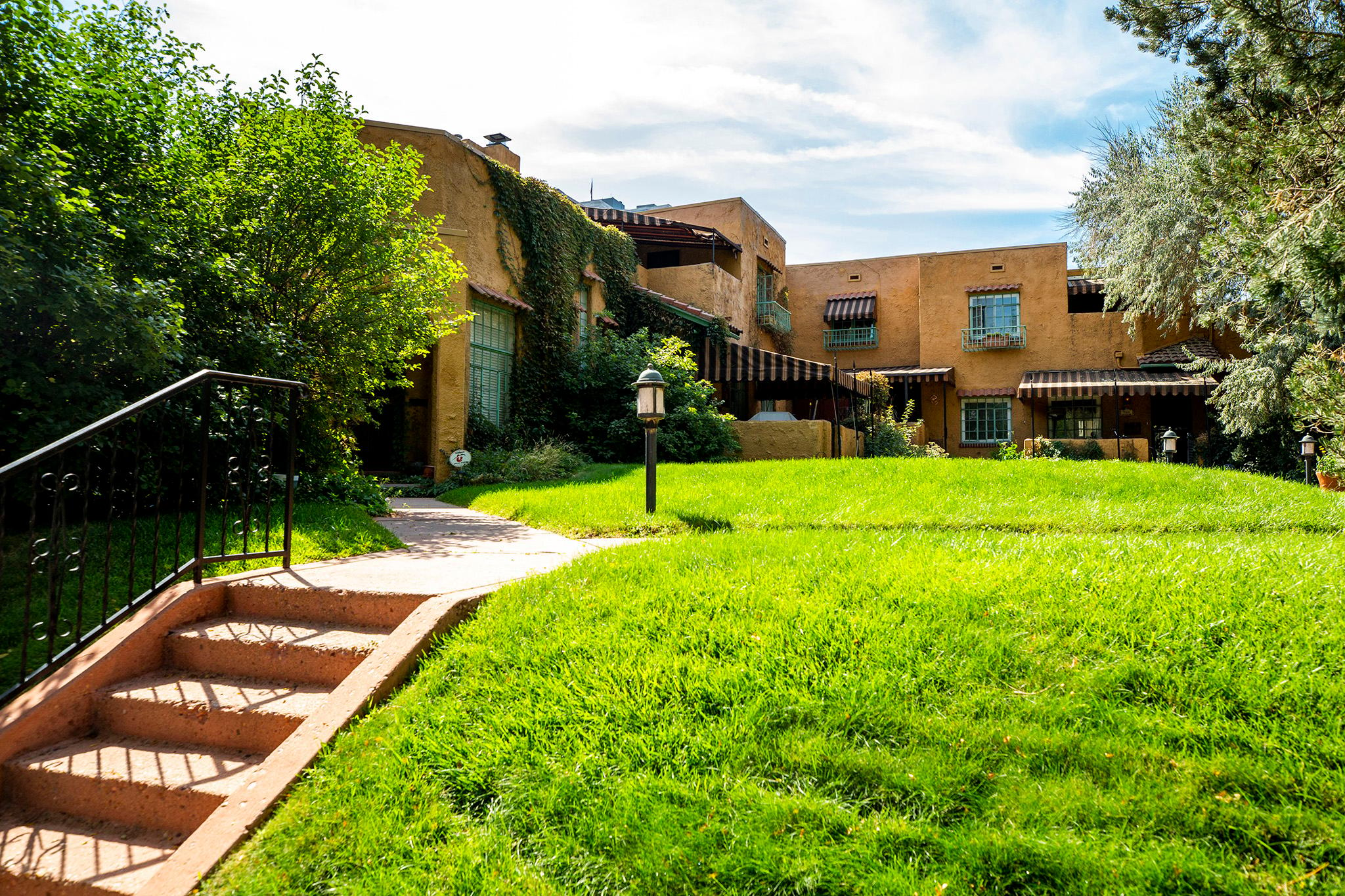Here we go again.
Denver City Council's Land Use, Transportation and Infrastructure Committee on Tuesday paused a landmark-status recommendation for Carmen Courts, the adobe colored condo complex at 900 East 1st Ave. The decision will give council members more time to review the landmark application, which was submitted against the wishes of some property owners at the complex. Councilman Chris Herndon, the committee chairman, made the suggestion to delay the vote until next Tuesday's meeting.
What's playing out at Carmen Courts seems a lot like what happened at Tom's Diner and the Howard Berkeley Park Chapel last year. In both cases, applications for landmark preservation were submitted to the city despite the owners' wishes to sell and demolish the properties.
The cases were resolved this year by applicants fighting for preservation and property owners. There's no resolution in sight for Carmen Courts, which has six units and seven owners. The property in the Speer neighborhood is near the Hungarian Freedom Park and was built in 1925.
Under the city's new rules for landmark preservation, everyone involved has more time to meet and come up with a possible compromise. But as principal city planner Kara Hahn pointed out during her presentation on the application Tuesday, no compromise was reached during mediation meetings. Some suggestions were made, but none were agreed upon.
Katie Sisk, one of the condo owners, said she and six other owners are each under contract to sell to Hines, a development company that wants to build a senior living community on the land. Sisk said the entire parcel was listed for $5.5 million.
She said residents there have owned the properties for as long as 23 years, while others have been there for less than 10 years. Sisk described the owners as a hardworking group that has poured thousands of dollars into upkeep.
Terrie Curry, another Carmen Court condo owner, said some owners are now struggling financially.
"These condos are our retirement," Curry said. "People see it as a pretty building, but I just want to ask them to look beyond the cracked stucco and just see who we are, because this is about our choice with our property."
Three residents filed an application for the landmark status, including Malcolm Murray and Sarah McCarthy, who spoke during Tuesday's meeting. Murray said they were interested in reaching a compromise, including rezoning the area to allow for more height on the parcel and finding a new buyer.
"We've been looking for a solution," Murray said. "We are not insisting that designation take place as long as Carmen Court can be reasonably preserved."
Chris Crawford, a partner at Hines, said the company did explore potential compromises, including bringing a different group to take over the contract and reimburse Hines for some expenses. There was also discussion about a potential land swap, but that fell through due to the other land's location. Crawford said potential tweaks that would help preserve certain parts of the complex would make Hinds' building plans hard to complete.
"The biggest issue here, truthfully, is this is a very tight site as it currently stands," Crawford said. "When you start downsizing the size of the parcel, it gets pretty out of skew, across a wide array of things."
The structure came to the city's attention after a demolition application was submitted on March 11. The city's Landmark Preservation staff must now figure out if the structure has the potential to become a landmark, thereby preserving it.
The complex was built in the Pueblo Revival style, with some Spanish Revival architectural elements mixed in. Hahn called it an unusual and uncommon example of the styles in Denver.
The commission found the structure met three criteria -- the minimum amount -- making it eligible for landmark preservation. According to the commission, it displays a distinctive architectural style or type, represents an established or familiar feature of the neighborhood due to its location, and promotes understanding and appreciation of the city's urban environment.













